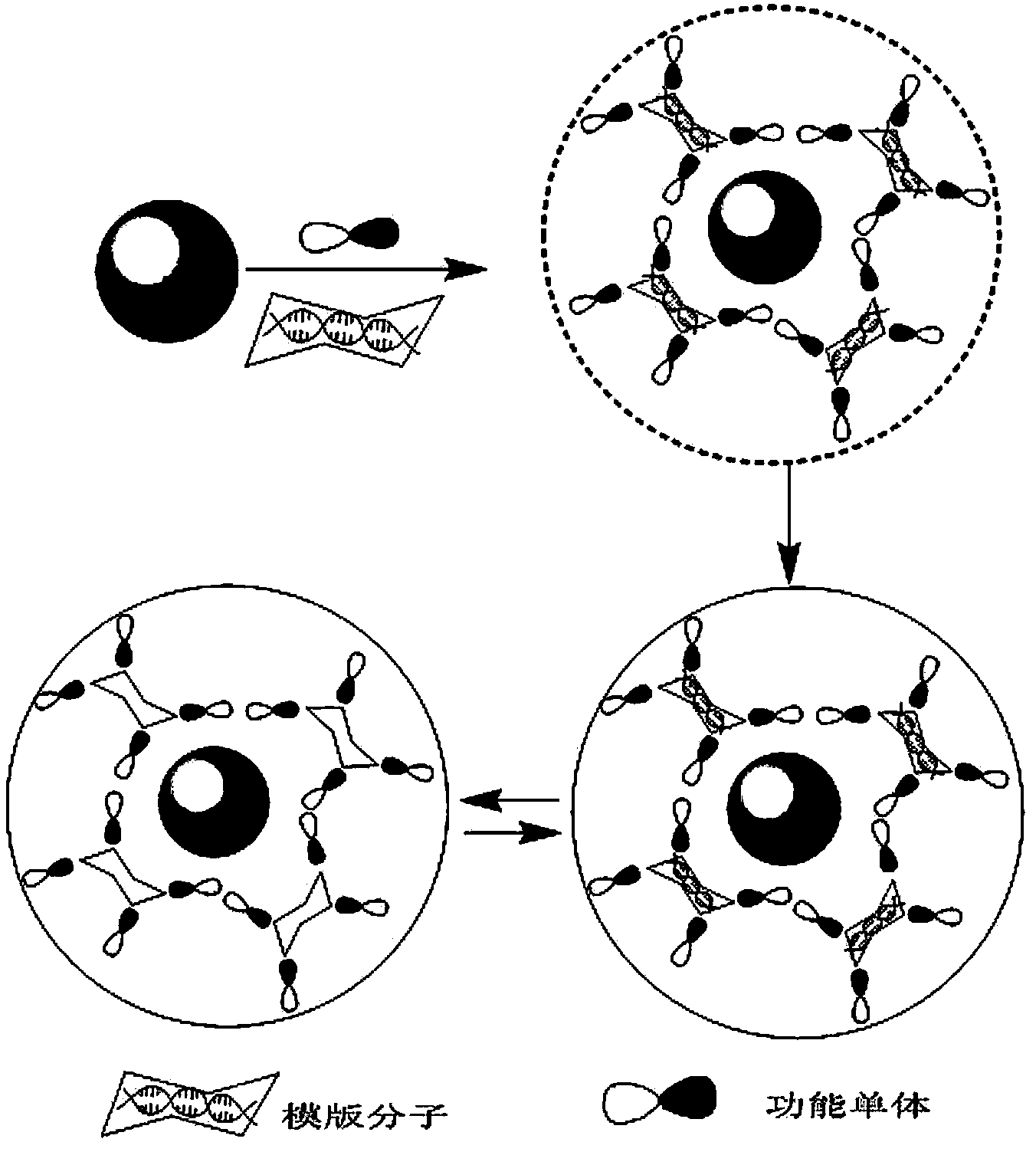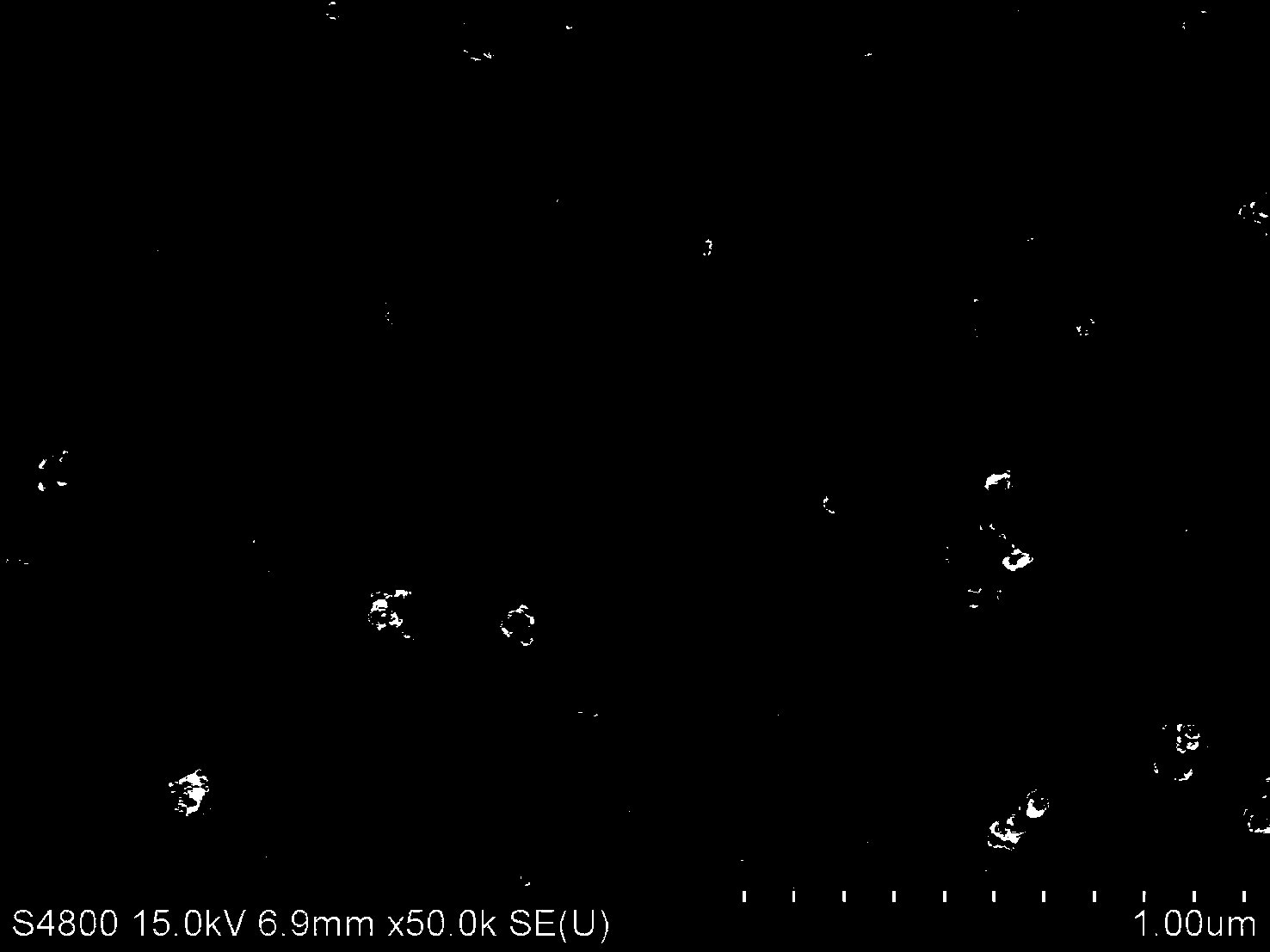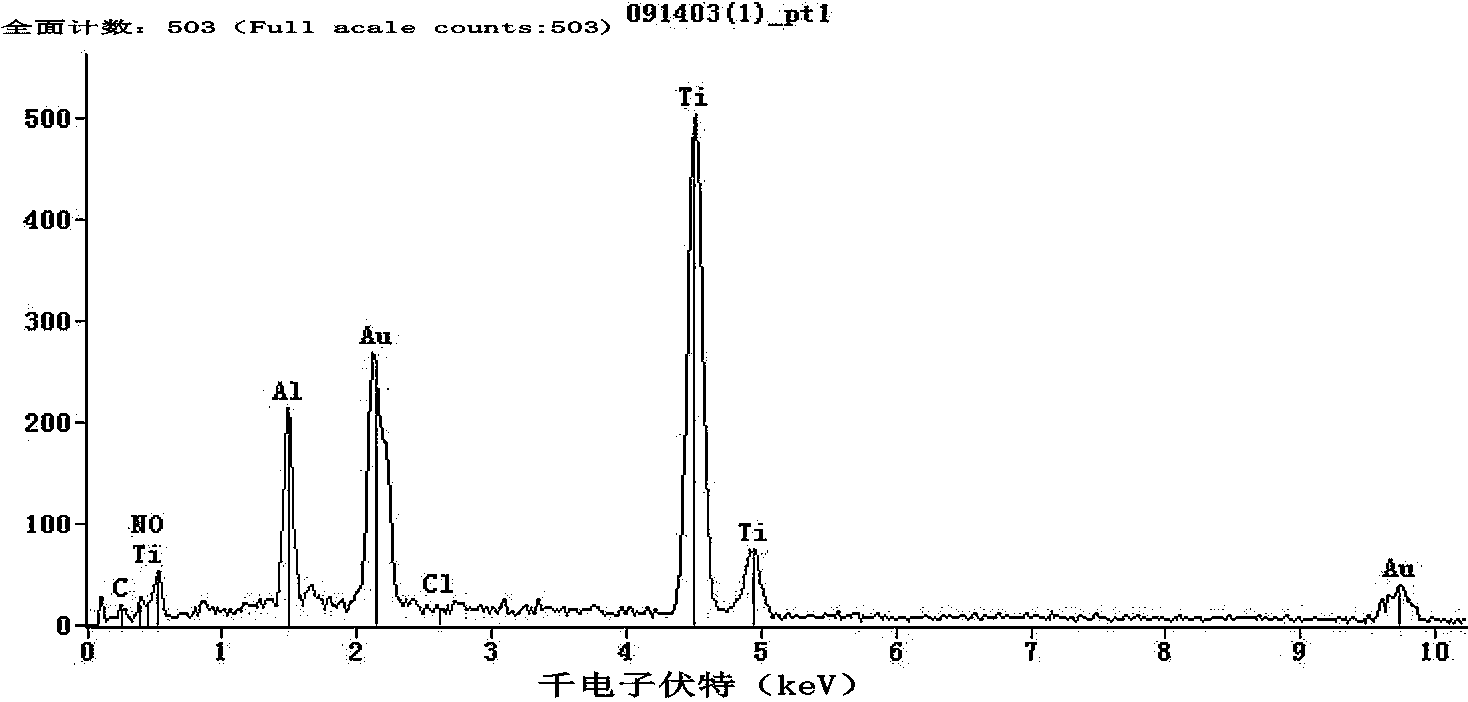Preparation method and application of microwave-assisted synthesized chlorine-element-doped surface molecular imprinting photocatalyst
A surface molecular imprinting, photocatalyst technology, applied in catalyst activation/preparation, chemical instruments and methods, physical/chemical process catalysts, etc., can solve the problem of deep embedding of active sites, poor selectivity of imprinted polymers, kinetic rate slow and so on
- Summary
- Abstract
- Description
- Claims
- Application Information
AI Technical Summary
Problems solved by technology
Method used
Image
Examples
Embodiment 1
[0031] (1) Slowly add 10mL tetrabutyl titanate dropwise to 100mL absolute ethanol solution, stir at room temperature for 30min; add 100mL 1mol / L dilute hydrochloric acid dropwise to the above solution, stir for 6h, and age for 2h until Form a gel; dry the obtained gel in a vacuum drying oven at 70°C for 10 hours, take it out and put it into a muffle furnace for calcination at 500°C for 4 hours, and cool naturally to obtain a chlorine-doped titanium dioxide composite photocatalyst;
[0032] (2) Dissolve 1 mmol of tetracycline template molecules in 30 mL of acetonitrile, stir in a water bath at 25°C for 30 min, then add the functional monomer (4-vinylpyridine) into the above solution and stir for 1 h, then add a cross-linking agent (trimethylol propane acrylate) and initiator (azobisisobutyrocyanide) and stirred for 30min, wherein the ratio of template molecule: functional monomer: crosslinking agent: initiator is 1:2:6:0.3; take 1g Add the photocatalyst synthesized in (1) into ...
Embodiment 2
[0035] According to the steps in Example 1, the difference is that in (2), 1 mmol of tetracycline template molecules are completely dissolved in 30 mL of toluene, and the functional monomer (4-vinylpyridine) is added to the above solution after stirring in a water bath at 25 °C for 30 min. Stir for 1h, then add crosslinking agent (trimethylolpropane acrylate) and initiator (azobisisobutyrocyanide) and stir for 30min, wherein template molecule: functional monomer: crosslinking agent: initiator The ratio is 1:2:6:0.3; take 1g of the photocatalyst synthesized in (1) and add it to the solution and continue to stir for 30 minutes. Stir at 2000rpm, cool naturally, centrifuge the obtained solution to obtain a solid substance and place it in a vacuum oven at 60°C for 12 hours; the obtained solid powder is subjected to Soxhlet extraction to elute template molecules and then dried for later use;
[0036] (3) According to the steps in Example 1, the activity of photodegradation of tetrac...
Embodiment 3
[0038]According to the steps in Example 1, the difference is that in (2), 1 mmol of tetracycline template molecules are completely dissolved in 30 mL of methanol, and the functional monomer (4-vinylpyridine) is added to the above solution after stirring in a water bath at 25 °C for 30 min. Stir for 1h, then add crosslinking agent (trimethylolpropane acrylate) and initiator (azobisisobutyrocyanide) and stir for 30min, wherein template molecule: functional monomer: crosslinking agent: initiator The ratio is 1:2:6:0.3; take 1g of the photocatalyst synthesized in (1) and add it to the solution and continue to stir for 30 minutes, then inject the solution into a microwave reaction bottle and heat at 600W and 70°C for 60 minutes, and magnetically stir during the heating process The rotating speed is 2000rpm, and it is cooled naturally, and the obtained solution is centrifuged to obtain a solid substance, which is dried in a vacuum oven at 60°C for 12 hours; the obtained solid powder ...
PUM
 Login to View More
Login to View More Abstract
Description
Claims
Application Information
 Login to View More
Login to View More - R&D
- Intellectual Property
- Life Sciences
- Materials
- Tech Scout
- Unparalleled Data Quality
- Higher Quality Content
- 60% Fewer Hallucinations
Browse by: Latest US Patents, China's latest patents, Technical Efficacy Thesaurus, Application Domain, Technology Topic, Popular Technical Reports.
© 2025 PatSnap. All rights reserved.Legal|Privacy policy|Modern Slavery Act Transparency Statement|Sitemap|About US| Contact US: help@patsnap.com



